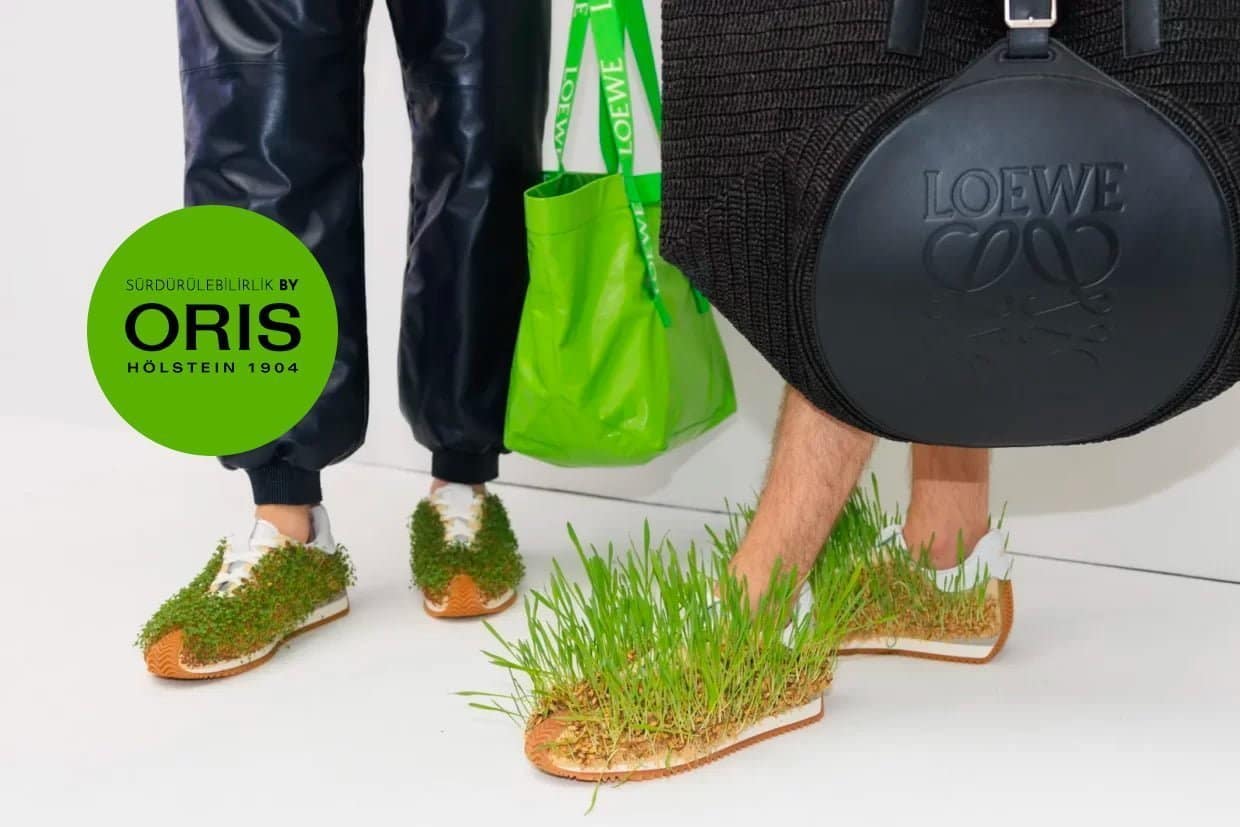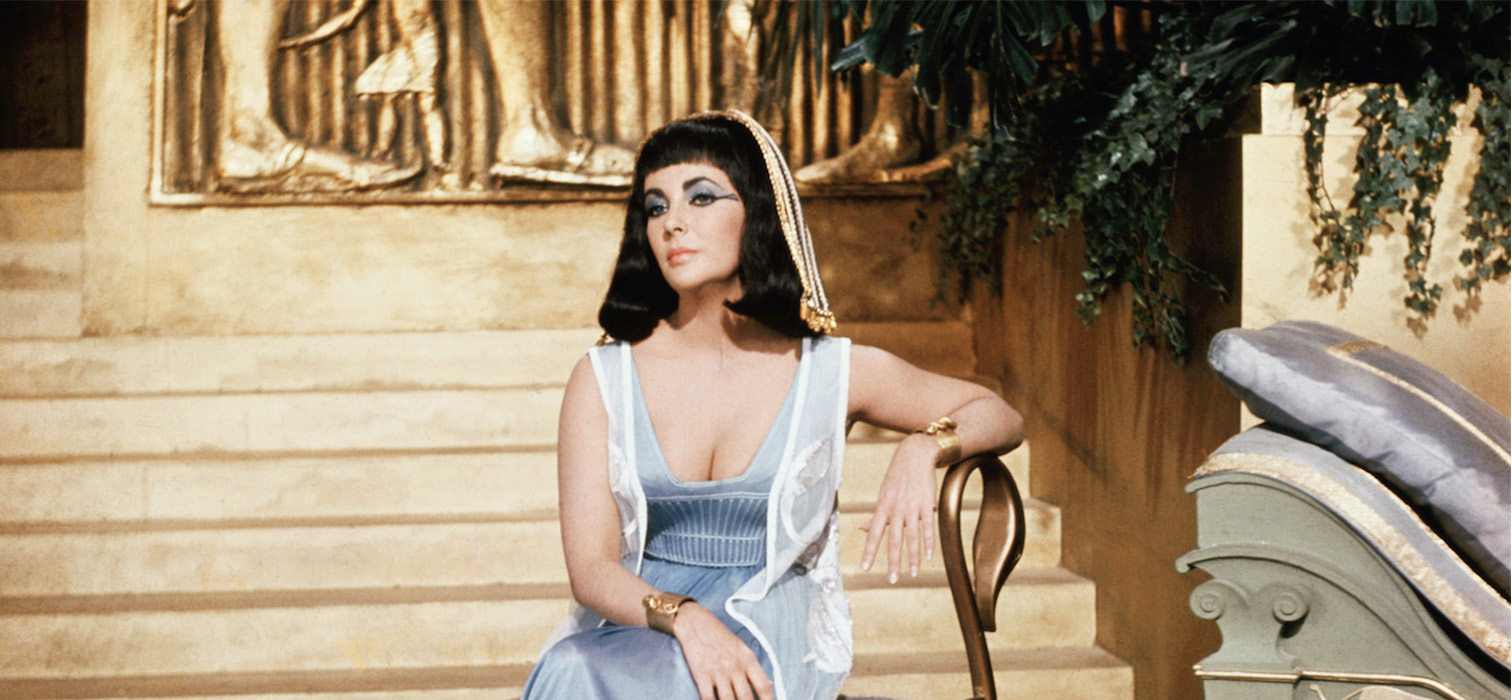Herald of the Future

Taking Jonathan Anderson’s wearable screens and the Spring/Summer 2023 men’s collection inspired by nature as our starting point, a quick look at the collaborations of high fashion with science and sustainability!

The Spring/Summer 2023 Collection designed by Jonathan Anderson for Loewe sends us greetings from the near future. He sent an experimental collection to the catwalks during Paris Fashion Week, without surrendering himself to digital clothes whose function we cannot fully grasp. Before the fashion show on June 25, the teasers shared by Loewe on Instagram gave clues about what to expect. However, we could not predict the point of the story. What could mushrooms have been when people who had completely surrendered themselves to machines got together?

There were two words that summed up the fashion show and the collection: organic and high-tech! The entire runway gave a “white screen” when the show started! As bright as possible, grass shoes, iPads and screens reminiscent of solar panels, which we often encounter in the Southern regions, reflected the future on clothes. In fact, these two different perspectives, which may seem distant from each other, point to the same point. A greener and cleaner future shaped by science and experiments! “The real thing and the re-creation of reality with the help of technology,” wrote the show’s notes. “Birds are flapping wings, fish are swimming, people are kissing. We are watching them from those screens.”

Jonathan Anderson collaborated with Spanish bio designer Paula Ulargui Escalona for this collection. Grass was grown in the tunnels of Paris for 20 days before the fashion show. Then these grasses were embroidered on jeans, jackets, trousers and shoes.”
This Loewe collection is not just the result of sleepless nights in the brand’s workshops in Madrid, it was finalized in underground tunnels just outside Paris. I guess when you read this sentence for the first time, a world reminiscent of a bit of gothic and a bit of science fiction comes to life in your eyes. Anderson may not have gone crazy and started working to save the future by shutting himself in dark rooms, but he is sure to offer the fashion industry the fresh blood it needs in a creative way.
Jonathan Anderson collaborated with Spanish bio designer Paula Ulargui Escalona for this collection. Just before the fashion show, grass was grown for 20 days in the tunnels of Paris. Its seeds were placed in the ground and watered under suitable conditions. It was then embroidered on jeans, jackets, trousers and shoes. (Just like embroidering crystals…)


So, what exactly was the business of technological products? Northern Irish designer Anderson said after the show: “I wanted the collection, and the clothes look surreal. I tried to create an atmosphere as if it was fictionalized in a computer environment. Soon, we will be able to see bees and endangered plant varieties only from behind digital screens.”
“After the fashion show, designer Anderson said: ‘I wanted a collection and clothes that look surreal. Soon, we will be able to see bees and endangered plant varieties only from behind digital screens.’”
Naturalness and High Fashion
Collaborations between fashion designers and bio-designers are not new. In fact, high fashion has been produced not only in workshops but also in laboratories for a while. This whole new process started with mushrooms, it has not become widespread yet, but today it is one of the most hip materials in the fashion world.

The mushrooms used by the designers in their collections are called Mylo. We can call it new leather. It is being developed by scientists at Bold Threads, a bioenergy and biochemistry lab in California. It is shaped by a substance called “mycelium” obtained from mushrooms. The time spent developing this experiment in the lab is just two weeks; According to the Bold Threads website, the amount of water used in the production phase, other sources and, accordingly, carbon emissions are much lower. And there are no petroleum-based ingredients in other fabrics like faux leather or PVC. That is not harmful to health. The first brands to include Mylo in their designs are Stella McCartney, Hermès and Gucci. In an interview with Wired, McCartney said: “We need to cooperate with nature, not against it, so we need to explore creative methods.”

Today, 55 percent of the clothing produced within the industry contains polyester. It is followed by nylon and acrylic. For the production of polyester, 330 million barrels of petroleum are required. According to Kering’s report, Balenciaga used only fabrics certified to be recycled, upcycled, organic and sustainable in its collection presented in October 2020. When Kering announced that it would reduce its carbon footprint by 2025, it had to take innovative steps to do so. Under the leadership of Marie-Claire Daveu, Kering also opened laboratories to work on innovative raw materials. Meanwhile, Tommy Hilfiger produced scarves from apple peels called Frumat, while Salvatore Ferragamo produced scarves from fibers from orange peels.
Stella McCartney told Wired in an interview: “We need to cooperate with nature, not against it, so we need to explore creative methods.”
Based in Istanbul, Gozen Institute is a multidisciplinary institution that focuses on biotechnology, fashion, design and art, and was established to build a sustainable, circular future. They produce biomaterials of the new world, such as sustainable bioplastics and vegan leather, in their own laboratories. One of them is Xylozen. Developed in a laboratory environment as a result of collaboration with living organisms, this biomaterial is a sustainable and plastic-free vegan leather that can replace animal skin and artificial leather. It can be used in many different sectors from clothing to shoes and accessories, from automotive to packaging. It is an ecological material that biodegrades at the end of its life and returns to nature as a resource when thrown into the soil.




